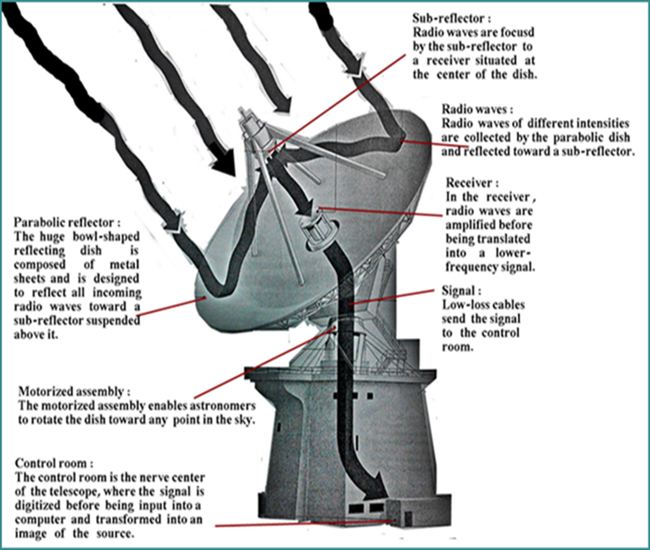From Big 2 Tiny, from Far 2 Near (Microscopes and Telescopes )
Electron Microscopes
========================
Optical microscopes have been used since the early 1600s to view objects too small
to be seen with the naked eye, and over 400 years of refinement have brought them
to the limits of their physical capabilities. The drive to see further into the microscopic
world led to the development of the electron microscope, a technology capable of
revealing details that are invisible to an optical microscope.
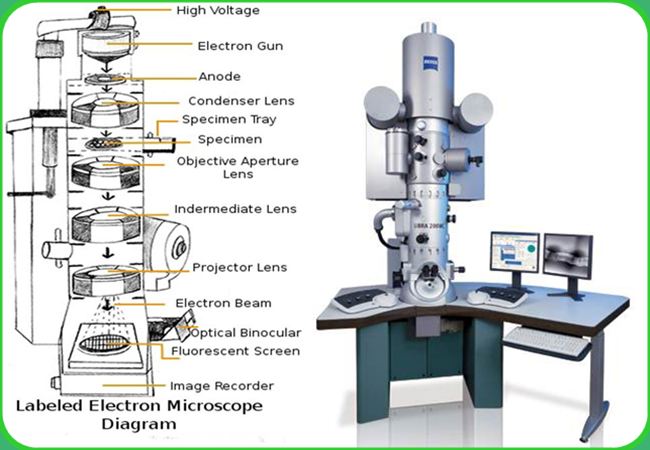
Type of Electron Microscopes
===========================
What limits the power of a microscope is not simply its capacity to magnify,
it is the degree of detail that it can reveal under magnification (its resolution).
Optical microscopes , which image objects using visible light, have resolutions
up to 2,000 times greater than that of the human eye. Electron microscopes
use beam of accelerated electrons to image objects. Like light, a beam of
matter such as electrons can be considered to have a wavelength. An electron
beam has a much shorter wavelength than visible light, which gives it a much
greater wavelength than visible light, which gives it a much greater resolution,
about two million times that of the human eye.
There are three types of electron microscopes :
1) the transmission electron microscope (TEM),
2) the scanning electron microscope (SEM), and
3) the scanning tunneling microscope (STM) .
TEMs and SEMs use an electron gun to generate a high-energy electron beam and
electromagnets to focus it.
STMs, the most sensitive type, use a tiny electron current to resolve objects on an
atomic scale.
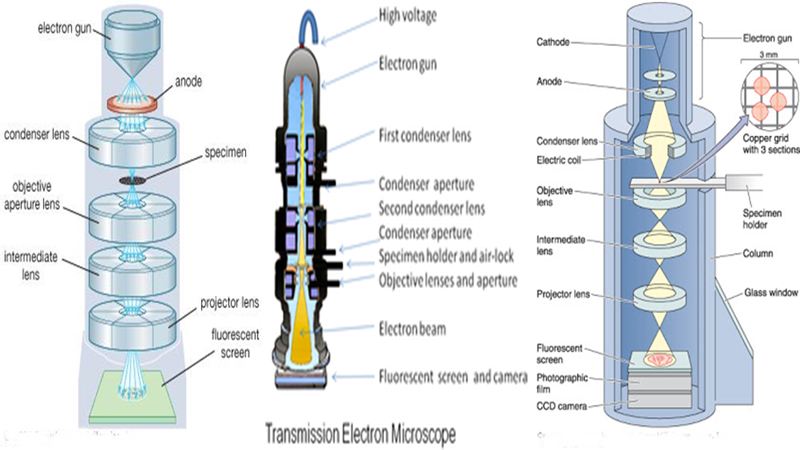
(TEM) Transmission Electron Microscope
===========================================
The TEM fires an electron beam through a specimen placed in the center of
the microscope . Electrons are absorbed or scattered by denser parts of the
specimen, while less dense parts allow the beam through. This casts a shadow
of the specimen onto an imaging plate directly underneath it.
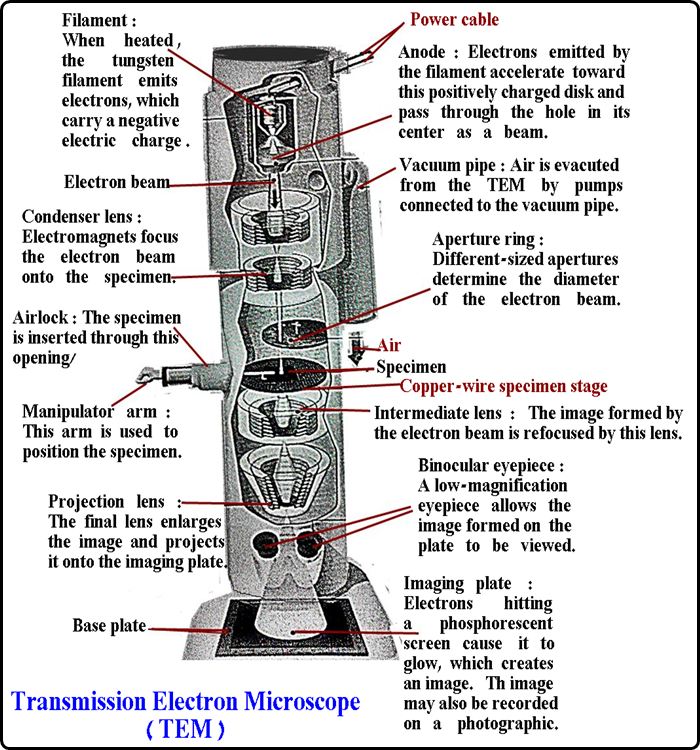
(SEM) Scanning Electron Microscope
========================================
In an SEM, an electron beam is focused onto the specimen and scanned across it,
rather like in a television cathode-ray tube. When struck by the beam, atoms on the
surface of the specimen release "secondary electrons". An Everhart-Thornley
detector collects these electrons and converts them into electric pulses, which are
processed by a computer to give a 3-D image of the specimen's surface.
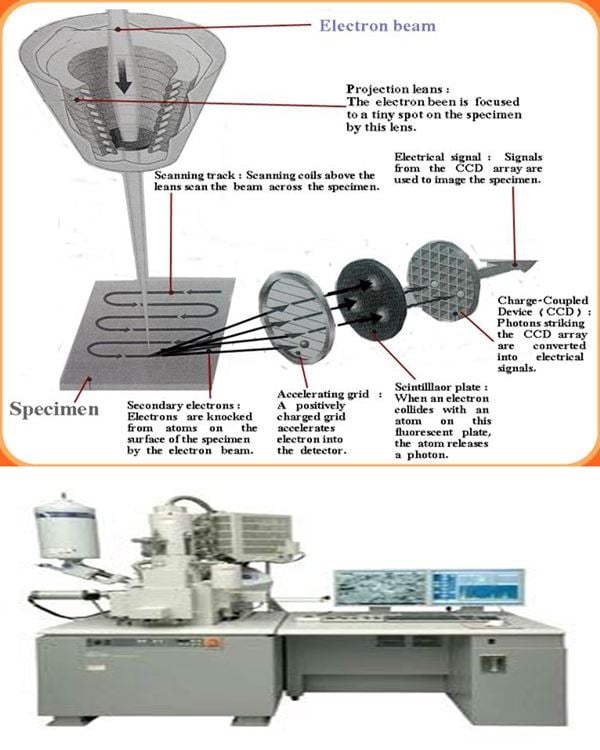
(STM) Scanning Tunneling Microscope
====================================
A STM works by passing a sharp electrically charged stylus so close to
the surface of a specimen that electrons jump the gap between them.
The amount of current produced is determined by the size of the gap.
A computer maintains the current, and hence the gap, at a constant level
as the stylus rides over atoms on the surface of the specimen. The vertical
movement of the stylus is used to produce a 3-D map of the surface of the
specimen.
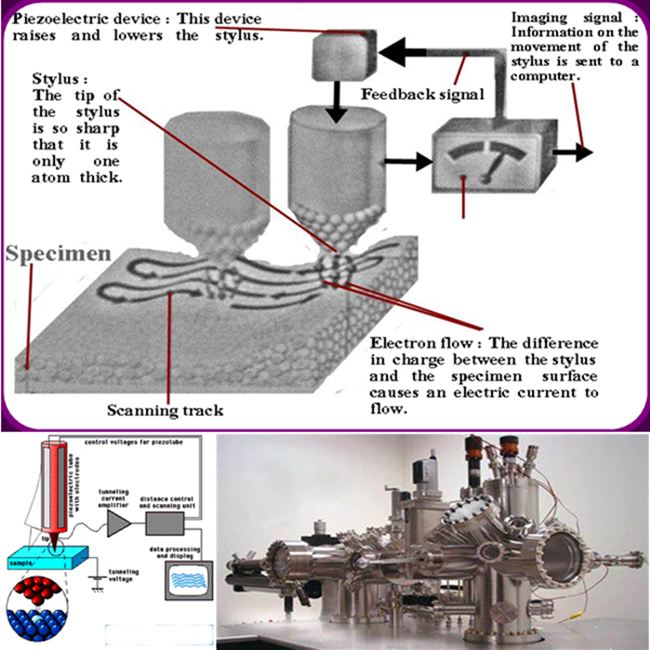
Optical Telescopes
=====================
Astronomers' yearning to magnify the light from the night sky into increasingly
detailed images has inspired engineers to invent more and more powerful
optical telescopes. Early astronomers, such as the Italian Galileo , used lenses
to focus the light of the stars. Refracting (lens-based) telescopes have now
been superseded by reflecting telescopes, which use parabolic mirrors to
collect and focus light.
The main advantage mirrors have over lenses is that they are comparatively less
heavy and can be supported from behind, allowing larger telescopes to be built
that collect more light. They are also able to collect some infrared and ultraviolet
rays as well as visible light. Further increases in the size of optical telescopes
has been made possible by the development of multi-sectional mirrors. These
mirrors have active control systems that enable their shape to be adjusted to
overcome distortions caused by their own weight and temperature differences in
the atmosphere.
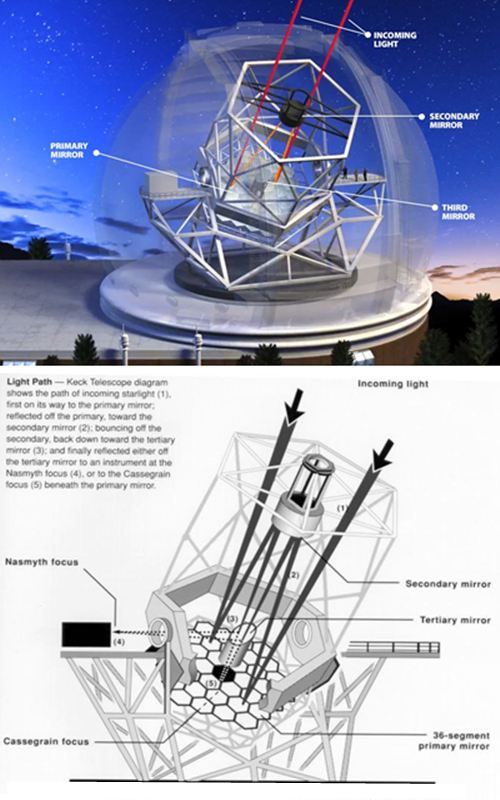
Adaptive Optics
=================
Air temperature in the atmosphere continually changes, causing local changes in
atmospheric density that distort light received (on Earth) from celestial objects.
Adaptive optic systems iron out many of these distortions. In one system, a laser
beam is focused to form a "beacon" high in the atmosphere. Light from this
beacon is collected by the telescope and routed to a sensor that measures any
distortions. Mirrors are then used to correct these distortions, and in doing so
correct the distortions of light from the stars.
How adaptive optics work ? :
-------------------------------------------------
A high-speed processor rapidly calculates how to correct the wave-front
distortions and drives two flexible mirrors that make the correction in real
time. The corrected light is then routed to a camera, which captures a very
sharp image of the star or other object being viewed.
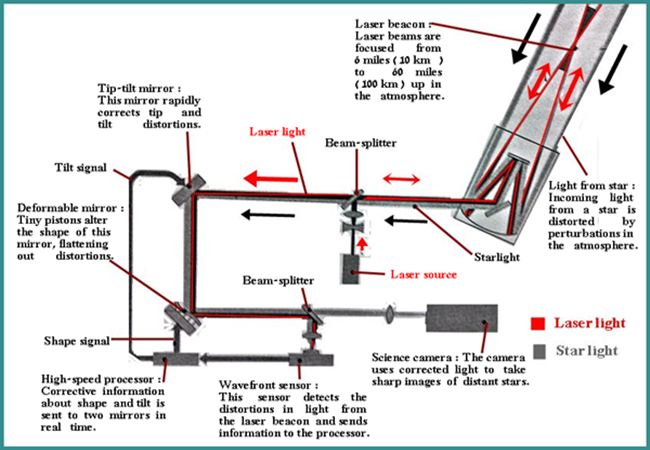
Keck Telescope
===========================
Each of the two Keck telescopes has a revolutionary primary mirror
made up of 36 individual segments that work together as a coherent
whole. A computer-controlled system of sensors and actuators ( pistons)
monitor and precisely adjust the position of each segment relative to
those around to correct the distorting effects of gravity on the mirror.
Keck's two primary mirrors gather 17 times as much light as the
Hubble Space Telescope.
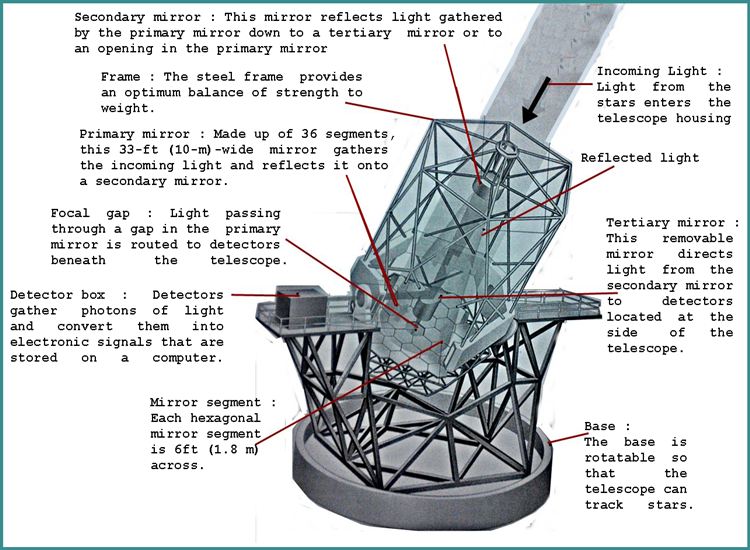
Radio Telescopes
====================================
Astronomers investigate the nature of the Universe often use telescopes to detect
radio waves emitted from objects in space. These generate images of objects,
such as pulsars and nebulae, that optical telescopes may be unable to detect at all.
Radio telescopes are a powerful tool for probing the deepest reaches of space,
being capable of resolving celestial bodies as far away as 15 billion light years.
They are also helping to unravel the secrets of the big bang.
The hiss of radio signals from the Milky Way that Karl Jansky detected in 1932 began
the era of radio astronomy. His fellow American, Grote Reber, invented the radio
telescope and revealed elements of the radio sky for the first time. In order to locate the
source of a radio signal, the diameter of the dish must be longer than the wavelength of
the radio wave it is designed to detect. Radio telescopes are much larger than optical
telescopes because radio waves have wavelengths that may be more than 30 ft (10 m)
long, while light has wavelengths of only hundreds of nanometers. The first giant dishes
were constructed at Jodrell Bank, England, in 1957. The Very Large Array (VLA), built
by the U.S. National Radio Observatory in 1980, uses a technique called interferometry
to produce much sharper images from an array of dishes. Radio telescopes can transmit
radio waves into space and detect the returning echoes. Telescopes such as the Arecibo
in Puerto Rico, which spans 1,000 ft ( 305 m) across, making it the largest dish in the world,
can be used to map and measure the rotation of planets and moons in our Solar System.
Interferometry
======================
The quest for more detailed astronomical images led radio astronomers to
apply the technique of interferometry to their instruments. Two dishes focused
on the same radio source in the sky have greater resolving power than a single
dish : the greater the distance between the dishes, or baseline, the sharper the
image as much as a thousand times as sharp as the image from an optical
telescope. The Very Large Baseline Array (VLBA ), which links ten dishes from
Hawaii to the Virgin Islands, produces very high-quality images. A baseline twice
the diameter of the Earth has been created by linking Earth- and space-telescopes.
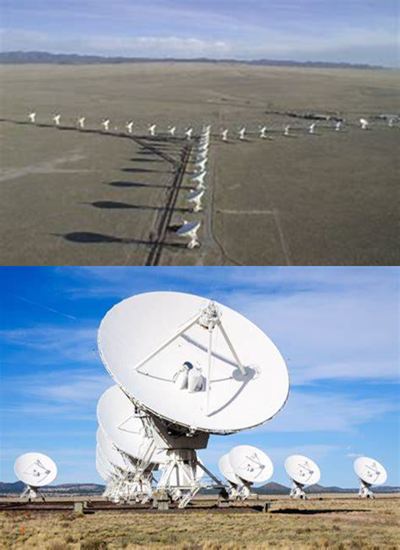
Single Dish Telescope
===================================
Radio telescopes , such as the 140-ft (40-m) telescope at the National Radio
Astronomy Observatory at Green Bank, West Virginia, have been used to study
all manner of astronomical objects that give off radio waves. It works in a similar
way to an optical telescope, collecting radio frequencies in a large parabolic dish
and focusing them onto a receiver. The telescope at Green Bank has been used
to study pulsars, the composition of nebulae and interstellar regions, and to detect
galaxies.
